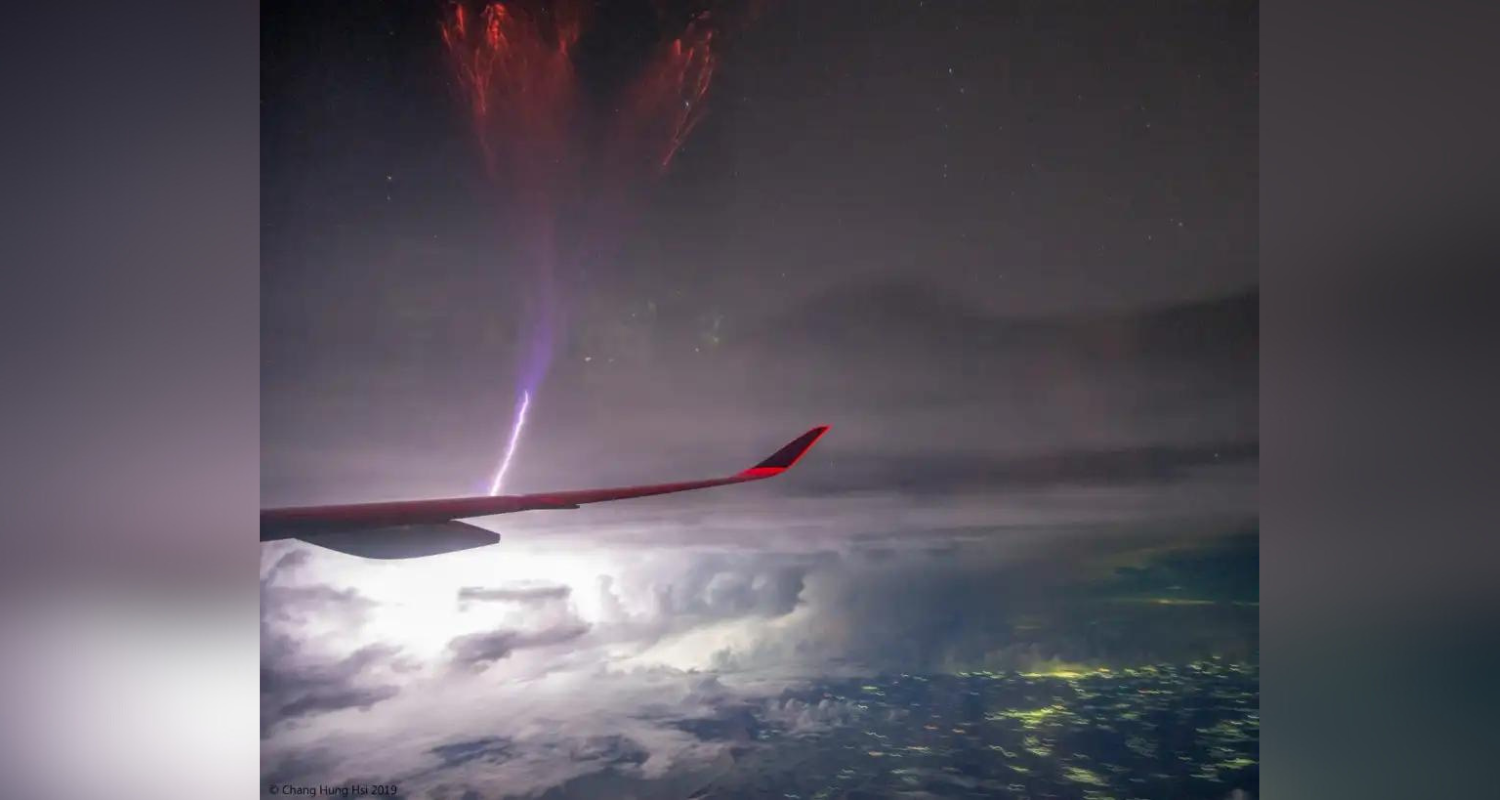As the monsoon unleashed its fury over Sikkim on June 18, with torrential rain, landslides, and floods, a rare and spectacular phenomenon was captured in the skies above the Himalayas by NASA.
Amid torrential rains, landslides, and flooding, the skies between China and Bhutan lit up with an extraordinary phenomenon known as gigantic jets or sprites.
Featured prominently as NASA's 'Picture of the Day,' the images reveal a dazzling display of massive jets shooting upwards from thunderstorms, a stark contrast to conventional lightning bolts that strike downwards.
NASA's 'Picture of the Day' showcased these dazzling gigantic jets, which are the most powerful form of lightning known to humanity.
Unlike typical lightning that strikes downward, these jets shoot upwards, reaching astonishing heights of over 80 kilometers, extending into the ionosphere where the atmosphere meets outer space.
These upside-down bolts, packing more than 50 times the power of standard lightning strikes, are a rare spectacle, with only around 1,000 sightings recorded annually.
In an electrifying composite image, four massive jets were captured mid-flight, soaring skyward within minutes of each other over China and Bhutan.
This image provides a rare glimpse of a phenomenon only documented in the last two decades.
Blue jets are created when a positively charged upper part of a cloud interacts with a negatively charged layer immediately above it, causing a brief, bright blue discharge of static electricity.
As explained by NASA, Gigantic jets, documented only in this century, are a type of lightning discharge that occurs between some thunderstorms and the Earth's ionosphere high above them.
They are an unusual type of lightning that is much different from regular cloud-to-cloud and cloud-to-ground lightning. The bottoms of gigantic jets appear similar to a cloud-to-above strike called blue jets, while the tops appear similar to upper-atmosphere red sprites.
Although the mechanism and trigger that cause gigantic jets remains a topic of research, it is clear that the jets reduce charge imbalance between different parts of Earth's atmosphere.
A good way to look for gigantic jets is to watch a powerful but distant thunderstorm from a clear location.
Botably, this extraordinary occurrence wasn't the first time blue lightning was observed in the Indian subcontinent.
On September 8, 2015, astronaut Andreas Mogensen captured the first recorded video of blue lightning from the International Space Station, documenting 245 brief blue discharges over the Bay of Bengal.

One of these discharges ascended into the stratosphere, showcasing the rare and powerful nature of these jets.
Further sightings of gigantic jets have been noted over the Indo-Gangetic plains. In 2013 and 2014, four gigantic jets were recorded over the Indian mainland.
On August 2, 2013, two were observed approximately 430 kilometers southwest of Allahabad, and on September 7, 2014, another two were captured about 350 kilometers south of Allahabad.
These jets, emerging during thunderstorms with cloud altitudes reaching 17 kilometers, had a short lifespan of 40–80 milliseconds, with one displaying a unique horizontal tilt.
To investigate these phenomena further, the Indian Institute of Geomagnetism (IIG) deployed a camera system in 2012 specifically for observing sprites, blue jets, and gigantic jets above thunderstorms.
Positioned outside Allahabad at coordinates 25.4°N, 81.9°E, the cameras monitor thunderstorm activity across the Indo-Gangetic plain.
Despite this research, understanding of gigantic jets, also known as reverse lightning to the sky, remains limited.
Their occurrence over the Himalayas, particularly above areas close to the Bay of Bengal, prompts further curiosity about other potential sightings that may have gone unnoticed.
The monsoon season's heavy rainfall in Sikkim and parts of the Himalayas nearer to the Bay of Bengal, combined with weather anomalies in the region, may be linked to these remarkable sightings of gigantic reverse lightning.
These phenomena, while rare, highlight the dynamic and often unpredictable nature of our atmosphere, providing scientists and sky watchers alike with a glimpse into the electrifying forces that shape our world.


